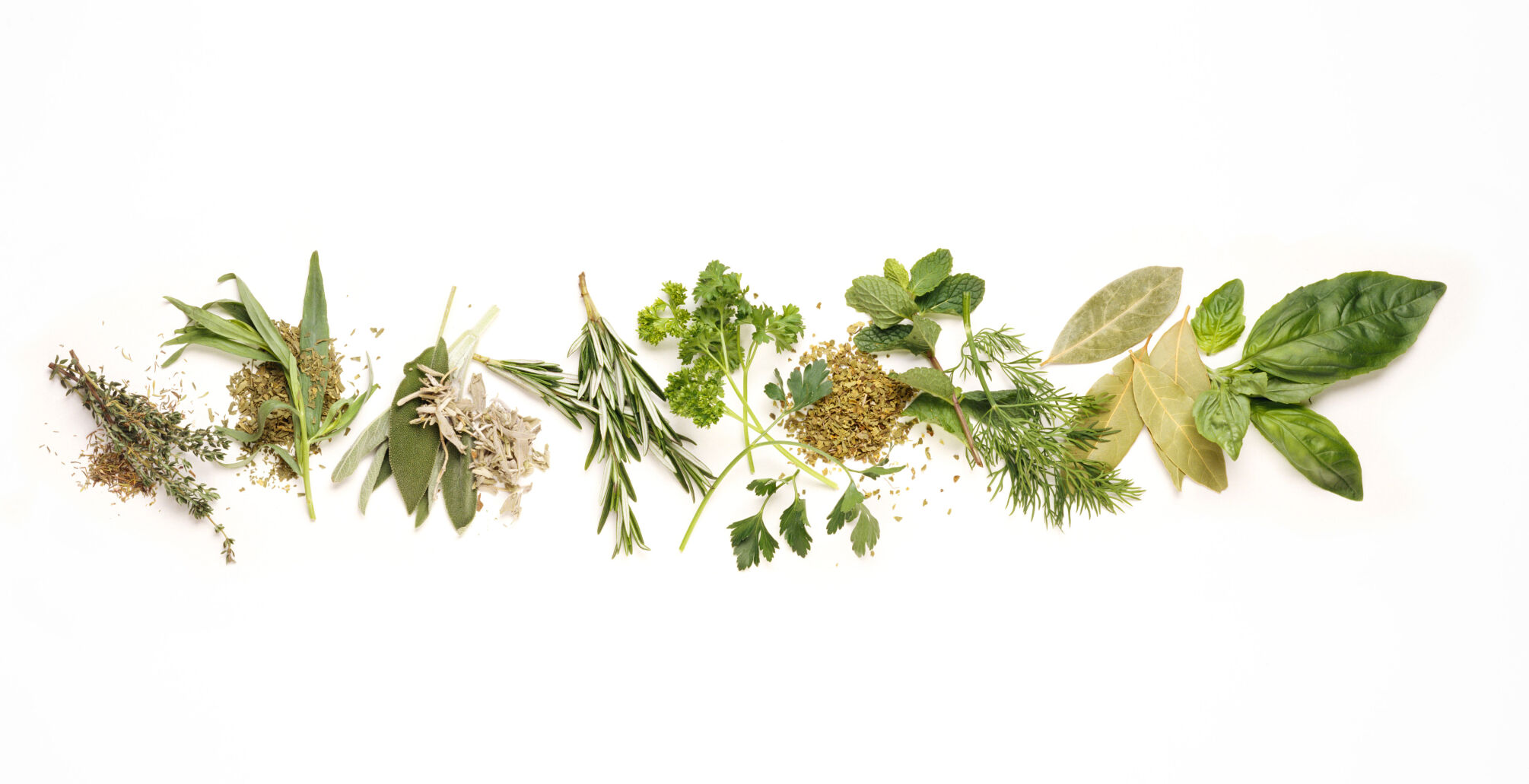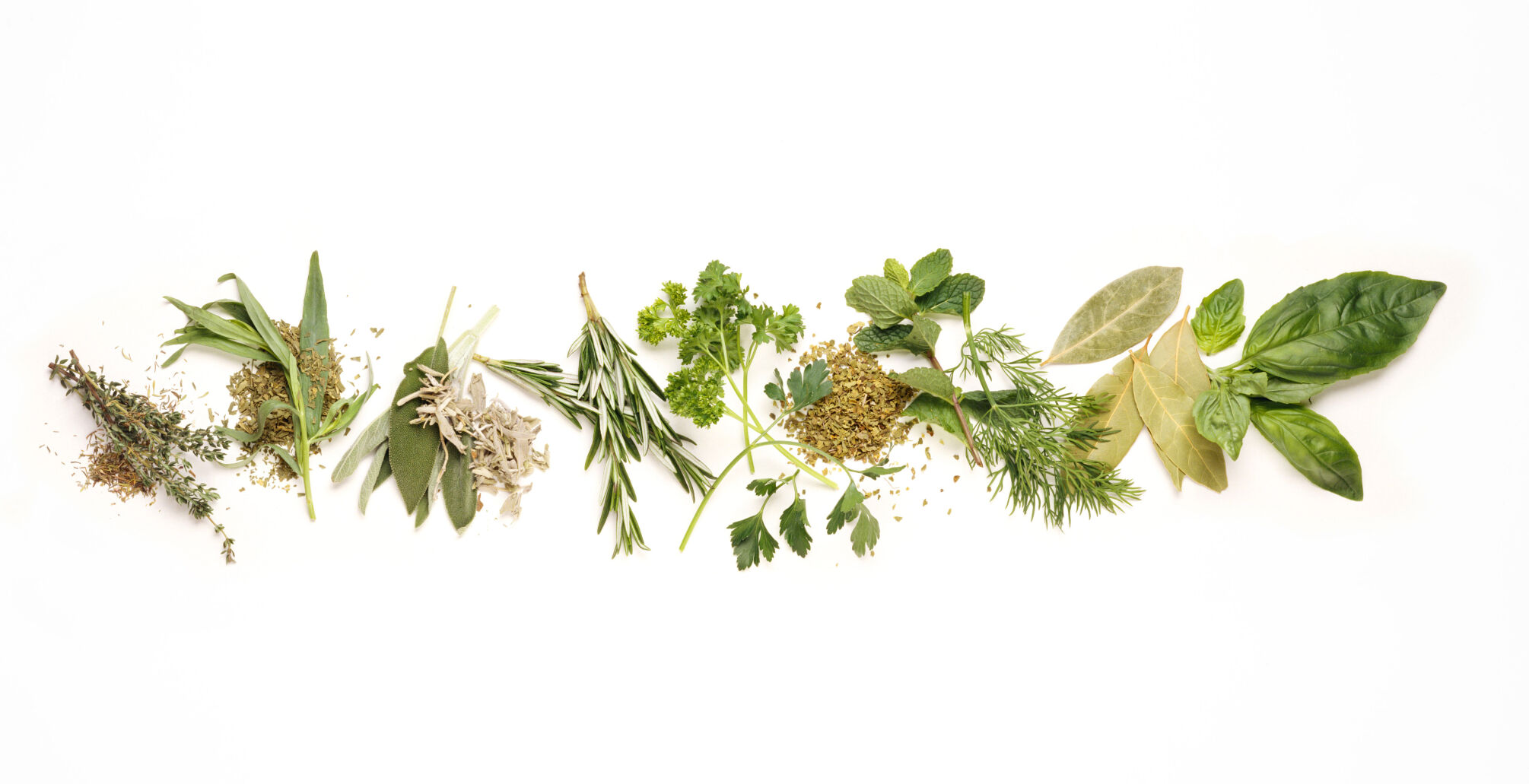Have you ever stood in front of the herb and spice section at the grocery store, feeling overwhelmed and wondering where to begin?
Are salt and pepper the only spices you add as you’re cooking?
If so, you are missing out on a world of flavor and health benefits.
Let’s begin by understanding, “what is an herb?”
One definition of an herb is any plant with leaves, seeds, or flowers used for flavoring, food, medicine, or perfume.
Botanists (scientists who study plants) define an herb as “a plant that does not produce a woody stem.”
Spices, on the other hand, can come from any other part of the plant but usually are the seeds, bark, or roots. Spices often are more pungent than herbs, so we use them in smaller amounts when compared to herbs. By this definition, garlic, onions, shallots, ginger and cinnamon would be examples of spices.
Here we will focus on herbs, their health benefits, how to grow them, and how to use them in cooking.
The use of plants as medicine predates written human history. Culinary and medicinal uses of herbs are heralded for their antioxidant, anti-inflammatory properties that support our digestion and immune systems.
In 2015, the World Health Organization estimated that more than 80% of the world’s population relies on herbal medicine for some part of their healthcare.
Herbal supplements, or phytomedicines, come in forms, including pills, powders, tinctures, teas, gels, lotions and creams. Any of these plant-based medicines should be used with the recommendation and supervision of a trained professional.
Fresh herbs readily are available in the grocery store and farmers markets, but growing herbs can be incredibly easy, whether you have a large garden area in your yard or small pots on your windowsill.
Herbs are perfect for container gardening. Some can be brought indoors and will continue to grow and serve you all winter. All you really need to grow all the fresh herbs you could possibly use is some quality soil, good seeds, a little sunshine, moisture and a bit of TLC. Any extra herbs easily can be dried, stored and used throughout the year.
Any meal can be enhanced by using fresh or dried herbs, which are filled with nutrients and health benefits. Herbs add flavor, color and fragrance without adding fat, salt, sugar or calories.
Dried herbs typically are more potent than fresh herbs, so be sure to follow your recipe closely. To make it even easier, there are several herb/spice blends available, such as an Italian, and many are salt-free if you are watching your sodium intake. If you are new to using herbs in cooking or confused about where to begin, check out our guide on how to get started.
The use of herbs and spices can bring new culinary adventures to the kitchen, so be brave and try something new tonight. Whether you are using herbs in cooking, essential oils, teas or supplements, don’t overlook the multitude of health benefits and how using a variety of herbs can add to your cooking and eating pleasure.
Linda Peterson is a life purpose and wellness coach at Statera Integrated Health & Wellness Solutions in Dubuque.















